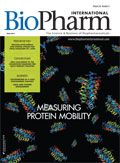New Challenges to the Cleanroom Paradigm for Multi-Product Facilities
Additional challenges to the new cleanroom paradigm from concurrent multiproduct manufacturing of bulk drug substances in a controlled non-classified (CNC) ballroom environment.
The existing model of locating biopharmaceutical manufacturing in classified cleanrooms is being re-examined as the biopharmaceutical industry aims to improve patients' access to products by reducing costs, while maintaining assurance of product quality and patient safety. The evolution of verifiably closed-manufacturing technologies is replacing open systems, thus removing the need for the extensive use of costly, classified environments as a risk-mitigation measure. By putting technical and procedural advances together with scientific and quality risk-based approaches, many industry leaders are improving process equipment systems such that reduced area classifications (grade D/ISO 8 at rest) and controlled non-classified (CNC) environments are now deemed appropriate for functionally closed systems and closed bulk drug-substance bioprocesses. The approach is one step towards helping reduce capital and operating costs, and thus product cost, which is a factor in improving patient access.
Another facility design and operational approach that may be attractive to industry is that of drug substance (DS) bioprocess manufacture in a "ballroom" facility. A ballroom-style facility utilizing closed systems might, in some situations, be the most economically attractive facility design, allowing for faster construction and more efficient use of financial resources and operating labor, contributing to overall lower product cost.

Photo Credit: 4X-image/Getty Images
This article follows on from a previous publication (1) in which the authors discussed the trend towards manufacturing bulk-drug substances in areas of lower classification for a dedicated single-product facility (1). The authors suggested potential risk-mitigation approaches to protect product quality and minimize operator safety risks, and also provided estimates of the capital and operating cost benefits. This article considers the potential additional risks that concurrent multi-product manufacturing in a common/shared ballroom facility introduces. The premise is that the concepts discussed in the prior publication—extensive use of closed processing in a CNC environment—are successfully applied. It also seeks to meet industry regulations for formal risk-management approaches (QRM) (2) to the design of facilities, especially because the updated EU Annex 2 mentions risk early on and extensively (2).
The focus of this paper envisages typical combinations of biological product classes within the same CNC ballroom facility. The industry may be ready for multiproduct processing in a facility design that is radically different from those found in use today. Certain product classes, product properties, or host systems may still require dedicated facilities or specialized containment equipment to minimize the risk of operator exposure or cross-contamination.
For industry participants to have a meaningful dialogue around these concepts globally understood and accepted definitions need to be established. The authors are grateful to the leaders of initiatives within ASME BPE, and ISPE, which are creating definitions that will be adopted by the pharmaceutical industry. Draft wording from this work is included in the online extended version of this article found on BioPharmInternational.com.
DEFINING RISK-BASED AND EFFECTIVE DESIGN AND OPERATIONAL PRINCIPLES
Prior to considering a concurrent, multi-product approach for DS bioprocess manufacturing, the facility design and operating principles need to be defined. This includes process definitions for each product, the product risk profile, the operational philosophies, and the requirements for GMP risk management.
Process descriptions for each product, including the type and sequence of unit operations, process durations and intermediate hold points, need to be spelled out so that the scope of risk assessment is clear. The control philosophy for prevention of product contamination by adventitious agents (including microbial and viral agents) and for the inactivation and clearance of endogenous viral agents is also important. Finally, the requirements for bioburden environmental controls appropriate for the manufacturing operation steps should be known with the premise that validation of closed process steps meet the need for bioburden control in a different way, allowing for use of a CNC environment.
Product and material risk profiles need to be understood, including the types of host-cell vectors proposed to be manufactured concurrently within the same processing area. The safety of products and intermediates should be assessed to understand the risk and impact of any adverse effect resulting from product cross contamination. High-risk product classes typically include antibiotics (beta-lactams), microbial spore formers, immunological products (vaccines and allergens), hormones, cytotoxics, and highly active products. Incompatible product classes may require dedicated equipment, special procedures, dedicated air handling, or dedicated facilities. These requirements are outside the scope of this article. Additional specific environmental health and safety hazards (EH&S) are commonly associated with handling of solvents, powder particulates, selective chemical agents, and bio-waste. In all cases, an EH&S assessment should be completed, which may identify requirements for specialized containment/controls or protective measures.
Upon conclusion of the aforementioned operational and product definitions, if segregation of bioprocess operations is possible by closing the process, then concurrent multiproduct processing is achievable. At this point, the design team should consider the potential risks and mitigation for such an approach. Table I provides some examples of potential risks and their mitigations. So long as the risks are considered manageable, these concepts are almost always advantageous from a cost and capacity perspective.
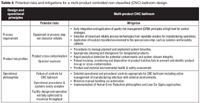
Table I: Potential risks and mitigations for a multi-product controlled non-classified (CNC) ballroom design.
Where risk calculations indicate that a risk remains above a predefined acceptable limit, then mitigation can be achieved by the use of spatial segregation concepts and by use of separate rooms, or locally controlled spaces. Inoculum preparation, for example, might need a biosafety cabinet. Column packing, particularly large pack-in-place systems and centrifugation processes, may need segregation if risk analyses still give cause for additional mitigation measures. Engineering control approaches can be considered as managing the risk for media and buffer preparation separation, giving a "soft" separation in the same space. Generally, flexible partitions and clear zoning can be employed as a risk-mitigation solution. Simple, logical flow paths and equipment layouts are sound foundations on which to build an effective concurrent multi-product facility in a ballroom space.
Figure 1 is a high-level schematic showing concept design for CNC ballroom layout. It is assumed there is a CNC-room environment in the main hall including final purification areas, closed processes throughout and shared equipment for buffer and media preparation, centrifugation, harvest, and clarification. Operation is based on multiple concurrent processing.
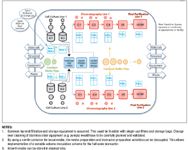
Figure 1: High-level schematic showing concept design for CNC ballroom layout. (ALL FIGURES ARE COURTESY OF THE AUTHORS)
ADDITIONAL COMPLEXITY OF PROCEDURAL CONTROLS AND FLOW-PATH MANAGEMENT WITHOUT PHYSICAL SEGREGATION
Concurrent multi-product manufacturing in a ballroom environment without physical separation by walls or rooms to maintain order, where operators may be expected to perform operations anywhere in the manufacturing suite, requires the highest-level of procedural discipline. Moreover, the effectiveness of systems for management of people, material, equipment, and waste flows becomes absolutely crucial. Logistical approaches and use of spatial and temporal concepts effectively replace physical segregation approaches.
Because many process unit operations require manual manipulations in one form or another, personnel from the manufacturing teams can be the greatest source of production risk. This is particularly true if there is a strong dependence on manual additions, connections, and manipulations. Despite these challenges, concurrent multi-product operation is successfully practiced in other types of manufacturing facilities, including synthetic API manufacture. Many mitigation approaches exist for adaptation into this situation.
Effective written procedures and operator education are a necessity in any pharmaceutical manufacture. Training should be enhanced beyond this to improve understanding, including "the why" and to communicate the consequences of operational mix-ups. Regulatory agencies now expect this training. A stronger mitigation approach may be adopted from the increasingly well-understood philosophies described by human performance improvement or human error reduction. Color-coding and physical keying, for example, can be used to avoid making incorrect connections or additions. Demarcations on the floor (i.e., different colored, cleanable floors) can be used to show where particular unit operations should be performed or where certain materials should be staged. Additional measures such as bar coding parts and materials, cross checking of set ups before processing, and material additions/transfers, as well as introducing procedural and time segregation into the operational philosophy are some of the ways to manage flow paths.
5S techniques should play an increasing role to establish the disciplined and standardized ways of working required to achieve controlled and orderly execution. 5S is the name of a workplace organization method that uses a list of five Japanese words: seiri, seiton, seiso, seiketsu, and shitsuke. The list describes how to organize a workspace for efficiency and effectiveness by identifying and storing the items used, maintaining the area and items, and sustaining the new order. The decision-making process usually comes from a dialogue about standardization, which builds understanding among employees of how they should do the work. Engineering mistake proofing offers elegant solutions to the risk of error and mixups. Unique connectors, for example, that can only be used for the intended purpose can eliminate risk of wrong connectors being used.
It is also likely that manufacturing execution system (MES) controls would be employed to mitigate potential procedural errors while maintaining a highly flexible and lean operational environment. The following are example requirements for an MES system that could be employed in a multi-product, ballroom environment. The MES system will be used to:
- Select and initiate process recipes
- Ensure that the correct materials are added during a compounding procedure
- Track the status and expiration dates for materials, media, and solutions used in the process
- Ensure that the correct connections are made (e.g., through bar-coding, radio frequency identification [RFID], or near-field communications)
- Ensure that the correct filters and consumables are used in the process
- Ensure that clean equipment is used and that process-dedicated equipment is not mistakenly used in the wrong process
- Confirm that samples and sample sources are correlated
- Confirm operator qualifications prior to performing a task
- Track operator activities and prompt the operator to make glove changes or gowning changes when moving from upstream to downstream processes or from one process to another
- Document intervention events for evaluation and review.
Thoughtful integration of these powerful MES controls with a distributed control system (DCS) or other automation platforms will contribute to a successful multi-product manufacturing operation in which risks are well mitigated.
Highly automated plants based on stainless steel and hard-piped equipment that are cleaned with clean-in-place (CIP)/steam-in-place (SIP) systems offer well known, robust, and proven approaches to removing the human element. Closed system/ballroom concepts can be applied effectively in this situation. However, the increasing trend to support the production of niche, smaller volumes in a flexible way suggests that the opportunities automation offers will need to be applied in a different way and there are likely to be single-use elements and manual manipulations that cannot be easily automated. In this case, the procedural controls remain crucial.
FACILITY ORGANIZATION TO MANAGE INTERFACE BETWEEN MANUFACTURING AND EXTERNAL ENVIRONMENTS
The management of interfaces between manufacturing zones and adjacent external environments is important in any facility design to appropriately segregate general access areas from controlled-access GMP manufacturing areas, and to allow for a defined, controlled flow of personnel and material between areas. For a CNC ballroom design, the facility shell generally protects the core manufacturing area and maintains the emphasis on high standards in a controlled, but not "classified," safe and clean environment. If the design and subsequent operation of these interfaces is lacking or not carried out effectively, then control of the CNC space may be compromised.
Consideration of the controlled passage of all people and materials in and out of the facility will be needed at a detailed level, and segregation strategies must be formulated. The external and connecting flows will need to be coordinated with internal flows. The design requirements in this respect may be thought of as typical but will take on added significance with a ballroom design.
A minimum specification for a CNC ballroom design was proposed in the previous article (1). The contiguous spaces may also be CNC or have their own classified requirements with appropriate design and operational specifications. The interface must support these differences effectively, but this is already the norm in any manufacturing facility design. The necessity of procedures for gowning changes at these interfaces, for example, and for management of material containers including identification control and cleaning/wipe-down routines, should be considered in the facility risk analysis. Other factors include waste removal and maintenance (i.e., parts and people) flows.
MANAGING PLANNED AND UNPLANNED SYSTEM BREACHES
Closed processing, or functionally closed processing, is a principal justification supporting multi-product manufacturing in a single ballroom suite. However, a manufacturing system is unlikely to be closed at all times; planned and occasionally unplanned breaches do occur in hard-piped and single-use equipment. Engineering and procedural measures need to be employed to mitigate the risks.
Impact of system breaches during concurrent multi-product manufacturing
Consider the case where upstream and downstream process steps for Products A and B biopharmaceutical DS's are operating in a ballroom suite, and a system breach occurs, thus releasing cell-culture material A to the suite. The cell-culture material contains cells, DS product, host cell impurities, and endogenous agents.
Cleaning and sanitization procedures, whose effectiveness is supported by data, would be required to contain the spill, collect and remove spilled material from the suite, and then clean and disinfect all potentially impacted surfaces. Procedures would also need to include details for mitigating risks from potential contamination on the gowns/gloves of the personnel involved in the spill and clean up, and even for those who may be in the area but not involved. The risk remains that cell-culture material could have been aerosolized and remain in the manufacturing area or that the cleaning and sanitization procedures are not completely effective, and some small risk remains. The scenario could apply equally to a traditionally segregated manufacturing area, as well as in the proposed ballroom, but the impact in the later situation may be more significant.
Spill-containment measures can be incorporated into the facility design, for example slopes in the floor and/or bund walls around systems to collect spill. To have a cross-contamination event, a downstream process step for Product A, or any process step for Product B, must be open while there is risk of contamination from the spill (see Figure 2).
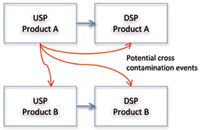
Figure 2: Potential vectors of cross contamination.
Functionally closed systems are routinely opened and depend on a sanitization procedure to bring the system back into a closed condition. Therefore, if cell-culture material entered the connection point through an aerosol or through contact by an operator, the sanitization procedure would have to be robust enough to remove this contamination.
A downstream process step from the same DS process or a process step of the other DS process could also be open due to an unplanned breach. This situation is unlikely, because it requires an unplanned breach, which resulted in the spill, and a second simultaneous breach to create an avenue for cross-contamination.
A cross-contamination from upstream to downstream in a single DS process could mean that steps that clear host-cell impurities or endogenous agents are bypassed. If log reductions of viral clearance are claimed in the process, then a small cross-contamination could violate a clearance claim. An assessment of the potential magnitude of a cross-contamination and its impact on viral reduction or host cell impurity clearance claims is recommended.
The impact of a cross-contamination from one DS to another depends on the nature of the products that are being manufactured. If the product types and indications are similar, the impact may be lower. In other cases, even a very small cross-contamination could have a potentially large safety impact. These situations need to be evaluated on a case-by-case basis with subject matter experts. Again, a quantitative assessment of the maximum tolerable cross-contamination is recommended.
Breaches of hard-piped systems and potential mitigating measures
Manual operations and connections to hard-piped systems are instances in which the system can be open. Other cases in which hard-piped systems can be open are scheduled maintenance, misalignment of piping or gaskets, or improper alignment of valves (e.g., a drain or vent valve that is open to atmosphere). After scheduled maintenance, the system must be sanitized before being returned to service. This is the same as with functionally closed systems. The sanitization method, after completion, must render the system closed. The sanitizing agent and process must be demonstrated to be effective at the designated concentration, at-use temperature, and exposure time.
Misalignment of gaskets, piping, or valves can be detected through pre-use integrity testing, such as pressure testing and helium/nitrogen leak testing. Integrity testing is also recommended after maintenance cycles. Automating vent or drain valves and then testing and validating the correct functionality of those valves can mitigate incorrect valve alignment.
Breaches of single-use systems and potential mitigating measures
There are many ways in which the integrity of single-use systems may be breached. The following are a few examples.
Single-use storage systems. Single-use storage systems may be breached by over filling or by overpressurizing. If a bin is used to hold the storage bag, the bag can be snagged on rough edges or can be damaged while it is being deployed or filled. Manipulation of partially filled bags can be especially problematic. The bags can be heavy, and if excessive force is applied to the bag film, it may be torn. Even if not torn, overfilling can result in breach of integrity of the inner polyethylene (PE) layer, exposing the process to the other film layers.
Strong bag films are central to any effort to minimize the number of system breaches. Also important are properly designed bin storage and holding systems. The internal surfaces of bins should be completely smooth and free of burrs. Well-designed hoist systems can ensure that the bags deploy properly and that manual manipulation of the bags during filling is minimal or unnecessary. Storage bins should also be designed so that it is easy and ergonomic to install and deploy the bags. If the storage systems feature vent filters, the filters must be sufficient to avoid clogging from condensed water. Pressure or level measurement in the bins can warn the operators before overfilling events occur. Such measurement can also allow automated interlocks to be implemented.
Single-use tubing systems may be breached through overpressure or through poor quality engagements. Improperly fastened cable-ties can lead to leaks. Poorly routed and organized tubing systems can also lead to inadvertent disconnections. Large-diameter or custom connections that are novel for the manufacturer can also be problematic due to lack of experience. Peristaltic pump tubing can become frayed, which can also lead to a system breach.
Over-molded engagements tend to be more robust than cable-tied engagements and can increase the robustness of single-use tubing systems. Engineers should be well aware of the pressure limitations of the tubing systems and may consider implementing interlocks to prevent overpressure scenarios. New assemblies that contain novel elements should be thoroughly tested during commissioning and qualification to identify potential weak points. Robust peristaltic-pump tubing should be specified, and tubing advances should be included in the operating procedure if the tubing will be used for an extended period of time.
CONTAMINATION DETECTION AND LOT DISPOSITION
Successful development of a strategy for contamination detection and lot disposition requires the application of an overall risk-based control strategy. This application needs to be done to assure process integrity and minimize cross-contamination potential, with quality system, analytical, and advanced process-monitoring concepts integrated into quality assurance (QA) oversight.
Many existing cGMP elements of the lot disposition process for QA will carry over to the new operating paradigm (i.e., CNC ballroom) as per CFR 211 and Eudralex, Volume 4. However, new approaches and additional focus on multi-product control strategies will also need to be designed and implemented to maintain or enhance current levels of oversight and control.
These control strategies would not require new approaches to the current quality system or QA oversight, assuming a shift to a multi-product operating environment in a traditional, segregated operations space with typical classified areas (ISO/EU Annexes) has already occurred. Similarly, multi-product control strategies generally employed in the industry are a solid foundation to build on for a new CNC ballroom-type operation.
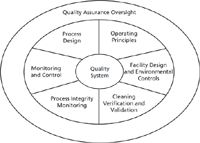
Figure 3: The integration of interacting elements crucial to contamination control.
The key elements of a risk-based control are depicted in Figure 3 and are further discussed below:
- The operating principles around flow path management (e.g., people, equipment, process streams, and waste) via engineering, procedural, and temporal controls (in descending order of preference) will have been established and will require review and adjustment versus invention in an existing facility; these same principles will apply to establishing the controls for the new CNC facility.
- The facility design and environmental controls will require a more detailed assessment and risk analysis, focused primarily on product quality and cross-contamination risks; special attention on risks associated with concurrent production of two or more products needs to be a crucial part of this risk analysis.
- Review of cleaning verification must be performed and validation approaches taken for the transition to multi-product operations particularly relating to sampling and testing protocols will be needed. Changes need to be incorporated into the facility cleaning validation documentation, with the data generated providing evidence of contamination control as required for the quality system lot disposition process.
- It is anticipated that process integrity monitoring, documentation, and subsequent QA review will increase with a change to a CNC, ballroom environment. Little, if any, environmental monitoring data would be available for QA consideration during the disposition process, hence the focus on process integrity and closed systems to support appropriate contamination controls for disposition decision-making.
• It is recommended that environmental monitoring process qualification (PQ) at facility start-up to establish baseline data and identify any environmental isolates that may appear during later in-process monitoring for bioburden be conducted. The baseline data will represent the primary reference and detection mechanism for any process deviations to established microbial limits. This would be consistent with what is expected in a traditional facility. Consideration should be given to the use of hand-held technology alternatives for viable/non-viable monitoring (e.g., Biovigilant) at this stage and a tool to employ in the case of planned or unplanned process integrity breaches.
• Apply integrity testing for closed systems including connections and evidence of expected process volumes and flow rates. The acquisition and review of this data from qualified or validated sources to support product disposition process are new elements that need to be integrated in to the quality system. Here, pressure hold, helium leak testing, or other alternatives should be considered to generate the needed data for review.
- Process design is expected to incorporate the targeted use of CIP/SIP or sanitization approaches at appropriate post closed-system connection breakage and re-establishment steps, with use of step/material appropriate connection components and technology. CIP/SIP execution completion per qualified or validated recipes would provide for data for QA review, batch record review, and/or batch disposition. Where recipes are automated and alarmed, the application of the review by exception principles, as recommended in GAMP 5 (3), may be integrated into the batch review and disposition process.
- Enhanced monitoring and control can be achieved via technology advancements.
• In-process control testing for bioburden takes on increased significance in this new operating model especially as traditional bioburden testing is not timely (several days). The incorporation of rapid microbiological analysis technology is a highly recommended element of the control strategy and may mitigate risks associated with timeliness and unexpected results to better support product disposition decisions.
• Consideration might also be given to adopting in-line identification (ID) testing technology to confirm "right product, right container" as real-time data for consideration in the disposition decision.
Integration of the interacting elements of operating principles, cleaning verification and validation, process integrity monitoring and documentation, and process design, monitoring, and control into the quality system and quality assurance oversight process are thus crucial components to achieve the required level of contamination detection and control. Quality-system elements including changeover, campaign, and concurrent manufacturing controls; managing planned (batch record design and change control) and unplanned (deviation or non-conformance) system breaches and the lot-disposition process inclusion of all appropriate criteria will need an intensive review and adjustment to effectively integrate as one moves from single-product, all-classified space to multi-product, CNC ballroom operations.
CONCLUSIONS
As the industry challenges past assumptions and approaches, evolving technologies and operational practices are enabling lower cost and more flexible facilities while the highest standards of product quality and patient safety are maintained. The understanding of what it takes to achieve and demonstrate closed- and functionally closed systems is allowing ballroom or open-production halls to be employed so that build costs and ongoing operating expenses are lower. Risk-management strategies are being rigorously used to eliminate and mitigate potential product contamination from planned and unplanned breaches in multi-product concurrent production scenarios.
The reliance on clear and well thought out design and operating principles has been described. These key design and operating requirements include procedural controls, spatial and temporal segregation controls, and increased use of automation. The additional complexity and reliance on human factors from logistical segregation as opposed to physical segregation has been discussed. The added importance of contamination detection and control has been set out.
Not all considerations suggested are applicable in all situations, and many options exist within current and new facility designs to adopt these concepts. However, opportunities do exist to reduce area classification for specific operations or the consolidation of manufacturing processing areas to gain the benefits of flexible, low-cost biomanufacturing.
ACKNOWLEDGEMENTS
The authors would like to thank Marc Pelletier (CRB Engineers) who is leading initiatives via the ASME BPE and ISPE for helping us with the definitions section and for providing valuable comments generally. They would also like to thank Steve Buchholz (Gallus Biopharmaceuticals), Martyn Becker, Joe Rogalewicz (GSK), Beth Junker (Merck) and Teresa Feeser (BMS) for providing feedback on the draft.
Simon Chalk is director, BioPhorum Operations Group, simon@biophorum.com; Scott Probst is group head, healthCare and biotechnology, technology development, process design and optimization, Bayer Technology Services; Ken Green is director, global manufacturing services, Pfizer, Inc.; Russell Moser is validation manager, Janssen Biopharmaceuticals; Frank Urbanski is director, global engineering, Pfizer Inc.; Matthew Zicaro is an HVAC engineer; Paul Smock is senior director, technical quality, MedImmune; Larry Pranzo is associate director architect/engineer, global engineering, Merck; Liz Dooley is engineering director, Janssen Supply Chain, Ireland; Phil McDuff is senior director, Engineering, Biogen Idec.
REFERENCES
1. Chalk, S., et.al., BioPharm. Intl. 24(8) (August 2011).
2. ICH, Q9 Quality Risk Management (ICH, November 9, 2005).
3. ISPE, GAMP 5: A Risk-Based Approach to Compliant GxP Computerized Systems (ISPE 2007).
